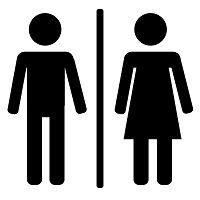Which Gender Reaches Low Cell Counts in HIV More Rapidly?
A number of factors contribute to the gender difference when it comes to CD4 cell counts in adults with the human immunodeficiency virus (HIV).

A number of factors contribute to the gender difference when it comes to CD4 cell counts in adults with the human immunodeficiency virus (HIV).
In a new study, males were found to reach low immunity levels more quickly than females. Lead author Nuala McGrath, PhD, and her University of Southampton colleagues analyzed how long it took South African patients to reach eligibility for antiretroviral therapy (ART), which was a CD4 cell count of less than 350 at the time.
“The finding that time to ART eligibility was significantly shorter for men highlights the need to develop gender oriented strategies throughout HIV care in the African context,” McGrath said in a news release.
The team evaluated 206 early HIV patients, ages 18 and older, who had a CD4 cell count of less than 500. Their progression was reported every 6 months and subjects filled out a questionnaire as well. The study revealed that 38%, or 79 patients, reached the ART eligibility. The average time it took to get to that level differed between the sexes with males at 12 months versus females at 33.9 months.
“Firstly men are more likely to present for care with slightly lower CD4 cell counts than women and we need to find ways to get men into care earlier,” McGrath informed.
Published in HIV Medicine, the authors recognized another factor that may contribute to the falling cell count. Nutrition plays an intricate role in the progression of HIV, therefore, malnutrition and food insecurity can have a harmful effect.
“Male sex residing in a household with food shortage in the previous year and taking nutritional supplements in the first 6 months after enrolment were associated with shorter time to ART eligibility,” the study explained.
South Africa has changed the ART eligibility guidelines since the research was conducted. They now follow the World Health Organization’s (WHO) recommendations of a 500 CD4 cell count or less. Even with this update, the results from the study showed that males reached that criterion at an average of 8 months compared to females at over 17 months.
“As the study took place within routine care, the people involved could potentially have had more rapid decline in their CD4 count than others in the same community that were not yet diagnosed or not in care,” McGrath noted. “So further research is needed.”